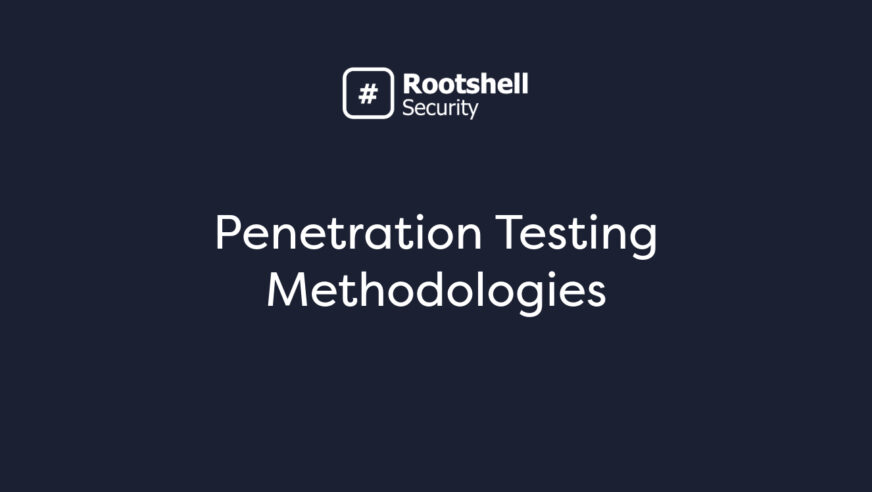Penetration testing aims to find vulnerabilities within a system before attackers can by simulating a real-world cyberattack. This controlled approach helps organisations understand how a malicious actor could exploit weaknesses and how well their defences would hold up under pressure.
According to IBM’s Cost of a Data Breach 2024 report, it takes an average of 258 days to identify and contain a breach. Proactive testing plays an important role in shortening this timeframe by enabling faster detection and response.
Not all penetration tests are the same however. There are many different methodologies, each designed to suit different systems, risk profiles, and security goals.
Choosing the right approach is key to getting meaningful results. In this blog, we’ll break down what penetration testing involves, explore the different testing methods available, and help you determine which one best fits your security needs.
What is Penetration Testing?
Penetration testing is a method used to assess the security of an IT system by attempting to breach its defences using the same tools and techniques that a real attacker would use.
This approach helps identify how well the system can withstand a genuine cyber threat. Insights found by the penetration test can be used by your security team to strengthen your security and fix detected vulnerabilities.
Types of penetration tests include:
-
- Network Penetration Testing targets weaknesses in wireless networks.
- Web Application Penetration Testing focuses on flaws in web apps like SQL injection or cross-site scripting (XSS).
- Social Engineering Tests look at human vulnerabilities through tactics like phishing assessments.
- Physical Penetration Testing assesses your physical security controls, such as locks, access points, and surveillance systems
- Cloud Penetration Testing helps you to find and address vulnerabilities across cloud and hybrid environments that could leave important assets exposed.
What is a Penetration Testing Methodology?
A penetration testing methodology is a structured framework that guides how a penetration test is planned, executed, and reported.
It outlines the steps ethical hackers follow to find vulnerabilities and mimics the techniques real attackers might use. A standard penetration testing process follows a structured sequence of steps, starting with pre-engagement planning to clearly define the test’s scope and objectives.

Stages of Penetration Testing
- Planning– Before any testing begins, the scope and goals are decided. This includes deciding what systems will be tested, the rules of engagement, timelines, and legal permissions.
- Information Gathering- Testers collect as much data as possible about the target environment. The goal is to monitor the attack surface and find weaknesses. The more information an attacker has, the easier it becomes to find weak points in the system.
- Scanning- Once information is gathered, testers begin scanning the system to find potential points of entry.
- Exploitation- With vulnerabilities identified, testers attempt to exploit them, just like a real attacker would. An exploitation shows the potential impact of a breach.
- Post-Exploitation– After getting into the system, the tester checks how much control they can gain and how far they can go without being noticed. This helps show what a real attacker could do if they broke in undetected.
- Reporting- All findings are documented in a report. This includes the vulnerabilities discovered, how they were exploited, the potential impact, and clear recommendations for fixes.
Rootshell Security support this process by offering a centralised dashboard for managing penetration test results, tracking remediation efforts, and turning technical data into actionable business insights.
Approaches to Performing a Penetration Test
White Box Penetration Testing
White Box testing is when the tester is given information about the system before the test starts. This could include things like the system’s design, source code, network setup, and even login details.
This method is great for spotting hidden flaws quickly, but it doesn’t reflect how a real attacker would behave. White Box testing is most useful for internal audits, code reviews, and making sure internal security is strong.
Black Box Penetration Testing
Black Box testing is essentially the opposite of White Box testing. In this approach, the penetration tester is given no prior knowledge of the target system, mimicking the perspective of an external attacker.
The tester only has access to publicly available information. This testing method provides the most realistic simulation of how an attacker would attempt to breach a system.
However, it can be time-consuming and costly because the tester must spend time gathering information and trying different attack methods. Black Box testing is best for testing external defenses and discovering vulnerabilities in publicly accessible systems.
Grey Box Penetration Testing
Grey Box testing combines elements of both White Box and Black Box testing. In this scenario, the penetration tester is given partial knowledge of the system. This method allows the tester to explore both the external and internal security of the system, finding vulnerabilities that would only be accessible with partial access.
It’s best used for testing the security of systems from the perspective of a trusted user or an attacker with limited insider knowledge.
Top 5 Penetration Testing Methodologies
1. OSSTMM (Open Source Security Testing Methodology Manual)
The Open Source Security Testing Methodology Manual (OSSTMM), developed by ISECOM, is a scientific approach to penetration testing. It helps organisations test how secure they really are by looking at five key areas:
- People
- Physical Access
- Wireless Connections
- Phone Systems
- Data Networks.
This approach is especially helpful for organisations that want to dig deeper than basic security checks and understand how exposed they are to different types of threats. It aims to remove guesswork by delivering clear, repeatable results. However, it can be quite detailed and complex, which might make it challenging for teams that are new to penetration testing or prefer a simpler method.
2. OWASP Testing Guide
The OWASP Testing Guide is a methodology designed specifically for web application security testing. It aligns closely with the OWASP Top 10 vulnerabilities, such as SQL injection, cross-site scripting, and broken authentication.
The guide outlines a 12-phase testing process and is regularly updated to reflect changing attack vectors. While it does look at web-specific vulnerabilities, it doesn’t extend to network or physical security testing.
3. NIST SP 800-115
Published by the U.S. National Institute of Standards and Technology, NIST SP 800-115 provides a formal and structured approach to security testing and assessment.
The guide breaks down security testing into three stages: Planning, Execution, and Post-Execution.
4. PTES (Penetration Testing Execution Standard)
PTES, short for Penetration Testing Execution Standard, outlines how penetration tests should be carried out from beginning to end.
Its main goal is to set a consistent standard for what organisations should expect during a penetration test and to help guide security professionals through each step.
5. ISSAF (Information Systems Security Assessment Framework)
ISSAF, created by the Open Information Systems Security Group (OISSG), covers applications, systems, and networks and provides clear guidance on how to approach and carry out security testing.
It provides detailed information on common vulnerabilities, risk evaluation, and recommended security measures.
While ISSAF is very thorough, it’s less commonly used today because newer, more flexible methodologies like PTES have become more popular.
Simplify Your Cybersecurity Today
Cybersecurity doesn’t have to be complicated. Rootshell Security simplifies the process by helping you choose the most effective methodology for your needs.
Our centralised platform gives you full visibility over testing results and remediation efforts, turning complex data into actionable insights.
Book a demo today to see how Rootshell can support your penetration testing strategy from planning through to reporting.



